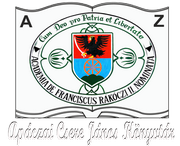Ezzel az azonosítóval hivatkozhat erre a dokumentumra forrásmegjelölésben vagy hiperhivatkozás esetén:
https://dspace.kmf.uz.ua/jspui/handle/123456789/5396Összes dokumentumadat
| DC mező | Érték | Nyelv |
|---|---|---|
| dc.contributor.author | Figula Ágota | hu |
| dc.contributor.author | Kása Emese | hu |
| dc.date.accessioned | 2025-10-06T11:20:26Z | - |
| dc.date.available | 2025-10-06T11:20:26Z | - |
| dc.date.issued | 2025 | - |
| dc.identifier.citation | In Кучінка Каталін, Тилищак Олександр та ін. (ред. кол.): Інноваційні цифрові методи в галузі освіти та досліджень. Міжнародна науково-практична конференція Берегове, 27-28 березня 2025 року. Збірник тез доповідей. Берегове, ЗУІ ім. Ференца Ракоці ІІ, 2025. c. 113-114. | en |
| dc.identifier.isbn | 978-617-8143-36-7 (PDF) | - |
| dc.identifier.uri | https://dspace.kmf.uz.ua/jspui/handle/123456789/5396 | - |
| dc.description.abstract | Abstract. We started our research because we found that there is a big gap between what students learn in secondary school and what they have to know in their first semester at the university. With our research we measured the mathematical knowledge of first year electrical engineering and physics students and we tried to help them to understand the concepts of analysis more easily. Moreover we used exploratory factor analysis and multiple linear regression to discover what items of the curriculum are the most important to the successful completion of the course Mathematics I. The material of the course are: computation in the field of complex numbers, linear algebra, the limit of sequences and functions, differentiation, integration and differential equations. At the beginning of the 20. century Manó Beke, László Rátz and Sándor Mikola thought that the teaching of the mathematics should be based on functions and the students can also understand the analysis with the help of this approach [1], [4]. Many papers deals with the teaching of analysis also nowadays [2], [3], [5]. They say that the active participation of the students on the lessons, the problem solving, the discovery of the connections and the illustration are the most important elements of the learning process. In our experiment we put emphasis on the understand of functions, on the illustration and on the practical applications. | en |
| dc.language.iso | en | en |
| dc.publisher | ЗУІ ім. Ференца Ракоці ІІ | en |
| dc.rights | Attribution-NonCommercial-NoDerivs 3.0 United States | * |
| dc.rights.uri | http://creativecommons.org/licenses/by-nc-nd/3.0/us/ | * |
| dc.subject | active learning | en |
| dc.subject | engineering and physics students | en |
| dc.subject | exploratory factor analysis (EFA) | en |
| dc.subject | mathematics education | en |
| dc.title | The investigation of the teaching of calculus among electrical engineering and physics students | en |
| dc.type | dc.type.conferenceAbstract | en |
| Ebben a gyűjteményben: | Innovatív digitális módszerek az oktatás és kutatás területén | |
Fájlok a dokumentumban:
| Fájl | Leírás | Méret | Formátum | |
|---|---|---|---|---|
| The_investigation_the_teaching_calculus_among_electrical_engineering_physics_2025.pdf | In Кучінка Каталін, Тилищак Олександр та ін. (ред. кол.): Інноваційні цифрові методи в галузі освіти та досліджень. Міжнародна науково-практична конференція Берегове, 27-28 березня 2025 року. Збірник тез доповідей. Берегове, ЗУІ ім. Ференца Ракоці ІІ, 2025. c. 113-114. | 12.26 MB | Adobe PDF | Megtekintés/Megnyitás |
This item is licensed under a Creative Commons License





